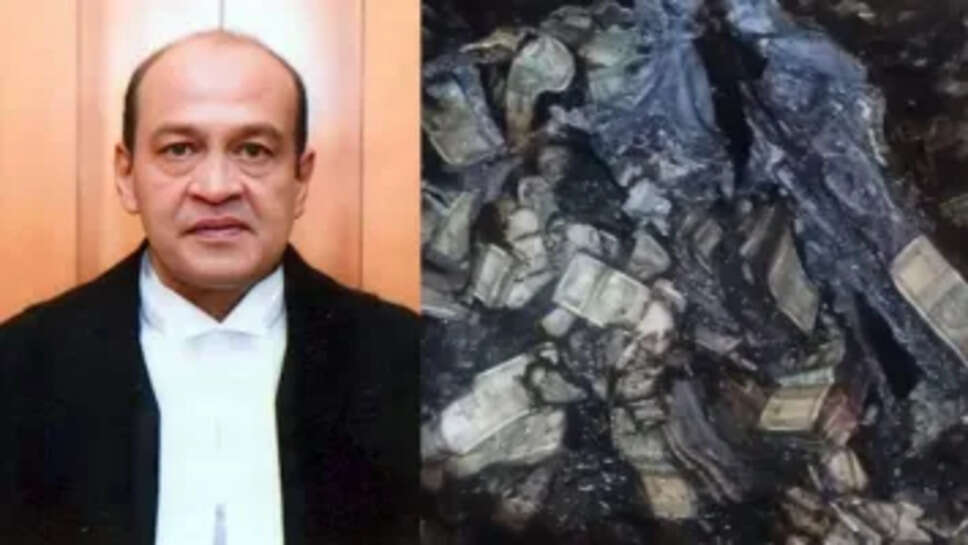Justice Varma’s Fate Hangs in Balance as Removal Inquiry Looms

In a rare and constitutionally significant development, the Lok Sabha is set to initiate formal proceedings against Justice Varma, with Speaker Om Birla expected to soon announce the formation of a three-member inquiry committee to probe allegations of misconduct against the sitting judge. The process, rooted in Article 124(4) of the Constitution and guided by the Judges (Inquiry) Act, 1968, marks a crucial moment for both the judiciary and the legislative oversight mechanism.
Justice Varma, who currently serves in a key capacity at the High Court level, has been accused of judicial impropriety and ethical lapses—allegations serious enough to trigger the constitutionally mandated impeachment mechanism. The case has stirred legal, political, and public interest alike, with many watching closely how the delicate balance between judicial independence and institutional accountability plays out.
What Triggered the Removal Process?
A removal motion against Justice Varma was submitted in the Lok Sabha with signatures from more than the required 100 Members of Parliament, citing specific charges that allegedly reflect conduct unbecoming of a judge.
While the exact nature of the accusations has not been made public in detail, sources indicate that the charges range from questionable judicial pronouncements and conflict of interest in certain high-profile cases, to administrative irregularities.
Upon the receipt of such a motion, the Speaker of the Lok Sabha is constitutionally empowered to examine its validity and either admit or reject it. In this case, the Speaker appears to have found the motion prima facie maintainable, and as a next step, is required to form a three-member committee to investigate the matter.
What Happens Next?
Once the Speaker announces the names, the inquiry panel will be constituted as per the Judges (Inquiry) Act. The committee typically includes:
-
A sitting Supreme Court judge
-
A High Court Chief Justice
-
An eminent jurist nominated by the Speaker
This committee is not a judicial trial, but rather a fact-finding investigation into whether the charges are substantiated enough to merit removal under constitutional grounds, which include proved misbehaviour or incapacity.
The committee will have the powers of a civil court to summon witnesses, examine documents, and record testimonies, and Justice Varma will be given an opportunity to respond to the allegations.
Impeachment of Judges: A Rare Event
The Indian Constitution allows for the removal of judges through a highly rigorous process, precisely to safeguard judicial independence. Article 124(4) stipulates that a judge of the Supreme Court or High Court can be removed only by an order of the President, passed after each House of Parliament supports the motion with a two-thirds majority of those present and voting.
Only a handful of judges have ever faced this process in India. Most notably, Justice V. Ramaswami in 1993 faced impeachment proceedings, but the motion failed in the Lok Sabha despite serious findings against him. In 2018, a motion against then Chief Justice of India Dipak Misra was rejected at the admission stage.
Thus, while removal proceedings may be initiated, successful impeachment is extremely rare due to the high threshold and the complex interplay of legal and political considerations.
Political Sensitivity Around the Case
The Justice Varma case has already stirred controversy across political aisles. While the opposition sees the motion as a necessary step toward judicial accountability, some ruling party members have hinted at caution, warning against turning Parliament into a judicial oversight body without restraint.
Speaker Om Birla has so far taken a measured stance, neither rushing the process nor allowing the motion to linger indefinitely. Sources suggest that the names for the committee are being finalized in consultation with the Chief Justice of India and senior legal advisors.
Balancing Judicial Independence and Oversight
The move to probe a sitting judge naturally raises questions about separation of powers. Judicial independence is a pillar of democracy, but so is accountability, especially when judges wield enormous power over public rights, liberties, and high-stakes decisions.
Legal experts argue that while the impeachment process is deliberately stringent, the current climate demands transparent mechanisms to address alleged judicial misconduct, without appearing vindictive or politically motivated.
The Judges (Inquiry) Act, 1968, provides a formal and fair structure, but it has long been criticized for being slow, secretive, and insufficiently accessible to the public.
In recent years, demands have risen for the creation of a National Judicial Commission to handle such matters with greater transparency and independence from both the judiciary and the legislature.
Justice Varma’s Legal Options
Justice Varma, who has thus far remained silent publicly, may opt to challenge the process in court, particularly if he believes the motion was politically motivated or the charges lack substance.
Previous cases have seen judges approach the Supreme Court on procedural grounds—often arguing breach of natural justice, violation of internal protocols, or lack of prima facie evidence.
However, the judiciary is generally reluctant to interfere in the constitutional process of impeachment, unless there is clear violation of law or procedure.
Broader Implications for Judiciary and Democracy
The initiation of removal proceedings has implications that go beyond Justice Varma as an individual. It will set a precedent for how seriously Parliament treats allegations against members of the judiciary and whether such actions reflect a healthy system of checks and balances or risk degenerating into political witch hunts.
The case will also serve as a litmus test for the judiciary's own mechanisms of internal discipline. With the in-house mechanism of the judiciary criticized for lack of transparency, the need for external, credible oversight has never been more pronounced.
Timeline of Key Steps in the Removal Process
-
Motion Submitted: More than 100 Lok Sabha MPs submit a motion citing misconduct.
-
Admission by Speaker: After preliminary scrutiny, the motion is deemed admissible.
-
Panel Formation: A 3-member committee is to be formed by the Speaker.
-
Investigation: The committee probes the charges and submits a report.
-
Debate in Parliament: If the charges are proven, both Houses must debate and vote.
-
Presidential Order: If both Houses pass the motion with a 2/3rd majority, the President may issue an order for removal.
As Speaker Om Birla prepares to announce the inquiry panel, the country awaits one of the most sensitive and consequential proceedings in recent legislative history. Whether or not Justice Varma is ultimately removed, the process itself will be a test of India's constitutional maturity, institutional integrity, and democratic restraint.
